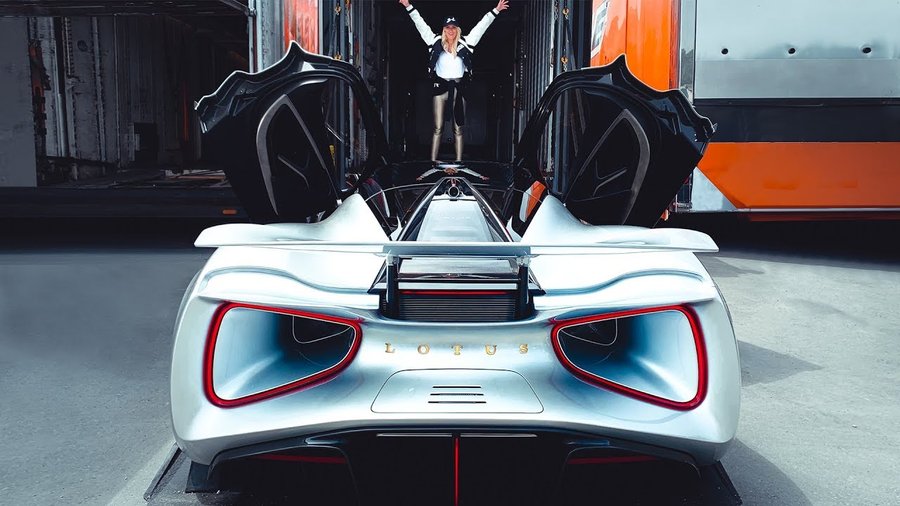Supercar Blondie Drives Lotus Evija And Discovers Interesting Details

The Lotus Evija made its debut during the recent Monterey Car Week, and the host of the Supercar Blondie YouTube channel was one of the first people in the world to record a video of driving it. She only got to putter around a parking lot, but it was still an exceptional experience.
One of the great things about Supercar Blondie's videos is that she likes to find out about little design details that most folks might not notice. For example, the Evija's headlights feature tiny ribs inside the lamps, and the designers intend these flourishes to look like warpaint around the lights. In addition, buyers can customize the metal trim running along the center of the seats to make the strip have any message that they want.
The Evija will arrive with an astounding 1,973 horsepower (1,471 kilowatts) coming from four electric motors. Lotus claims the hypercar can reach 62 miles per hour (100 kilometers per hour) in less than three seconds, which seems very believable given the power figure. The top speed will be above 200 miles per hour (322 kilometers per hour). The estimated range for this setup is 250 miles (402 kilometers).
To make the most of this gargantuan output, the Evija uses a single-piece carbon-fiber monocoque, and the whole vehicle allegedly weighs 3,704 pounds (1,680 kilograms).
The Evija has a fascinating interior design. The steering wheel is quite tiny, and Lotus still manages to incorporate lots of controls into it. The hexagonal shape to the buttons on the center console leave Supercar Blondie smitten. On the passenger side, the designers leave the footwell mostly open, except for the section of the dashboard with the HVAC vents over the top.
Lotus will build just 130 examples of the Evija. The final price isn't available, but the company targets a figure from €1.5 million to €2 million ($1.8 million to 2.5 million). Production doesn't begin until 2020.
Nouvelles connexes


